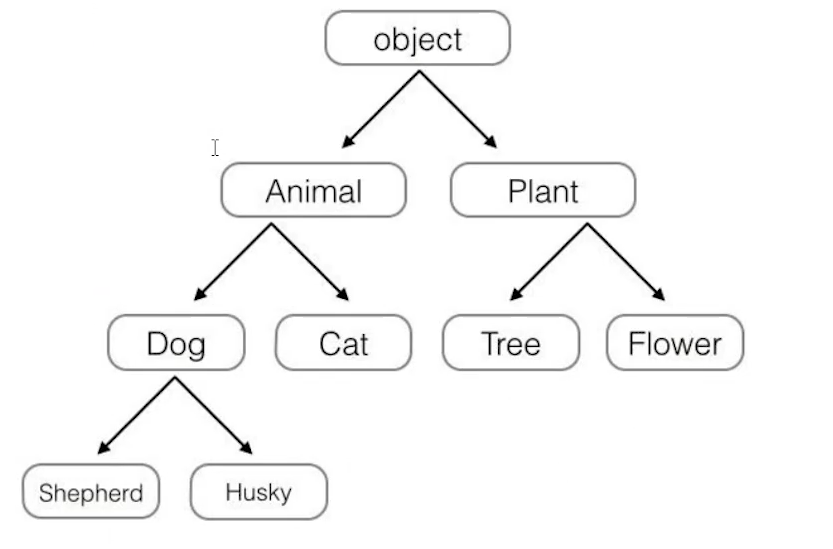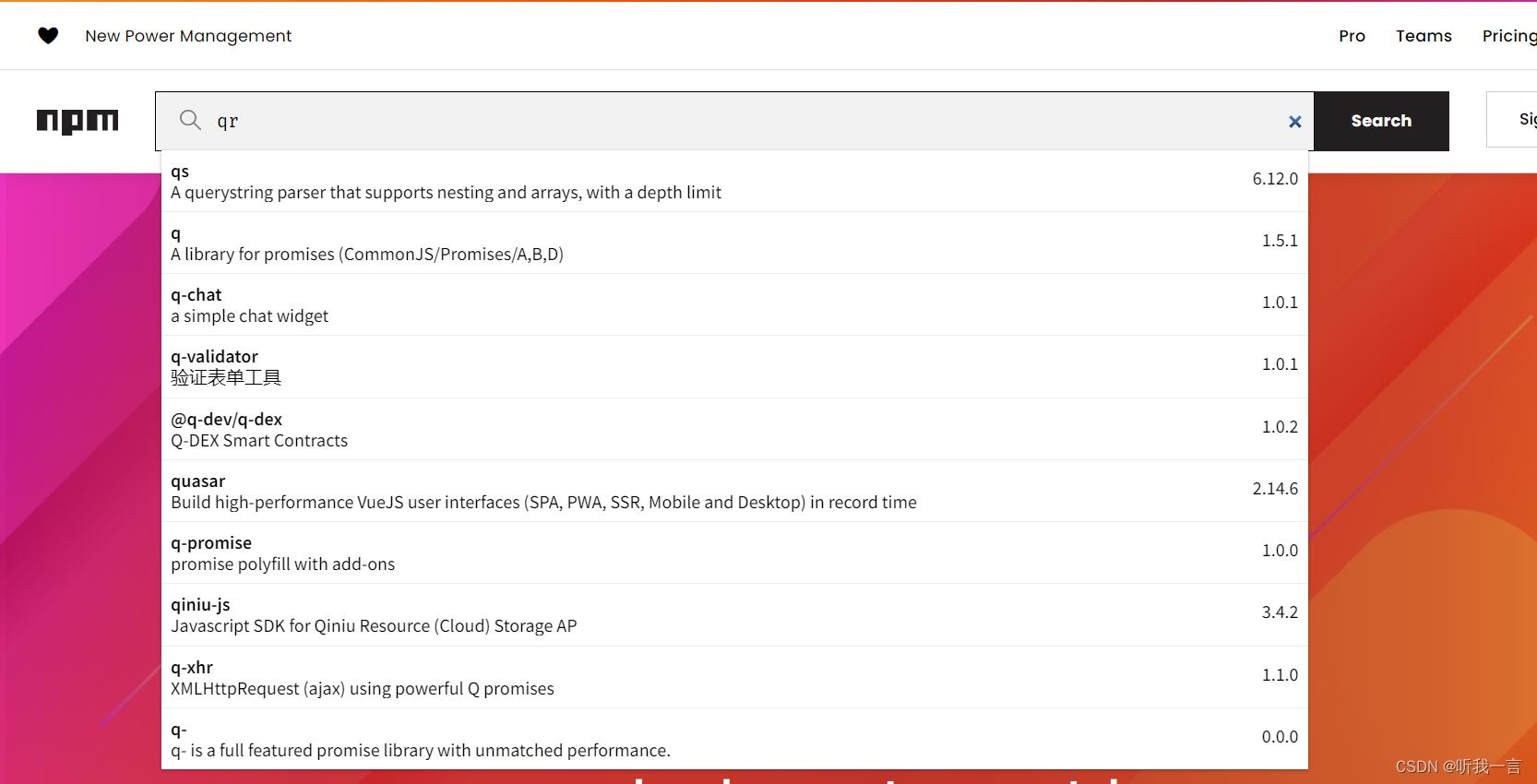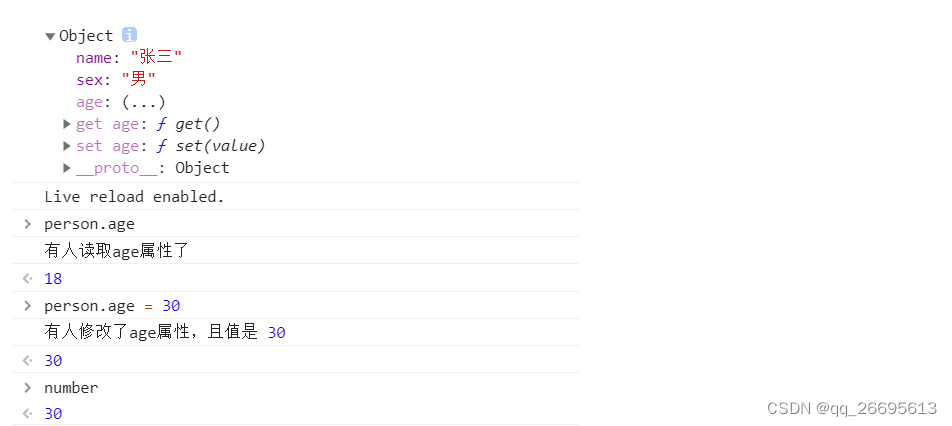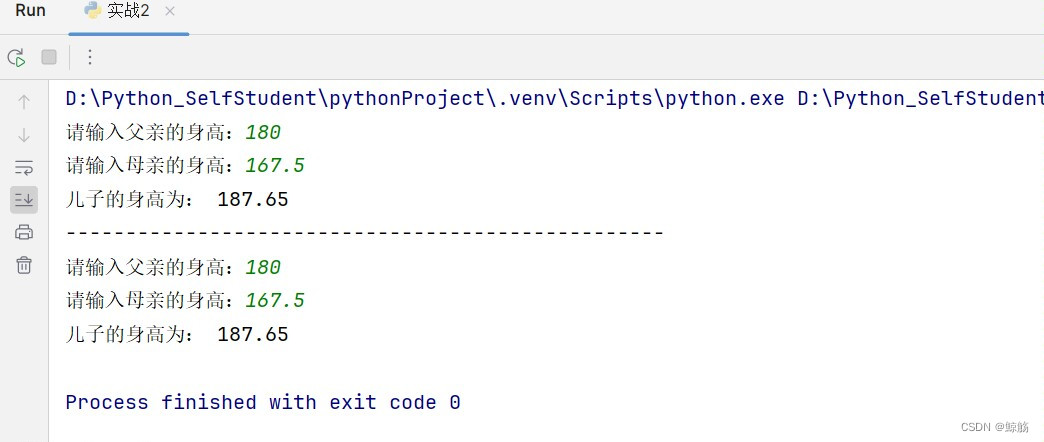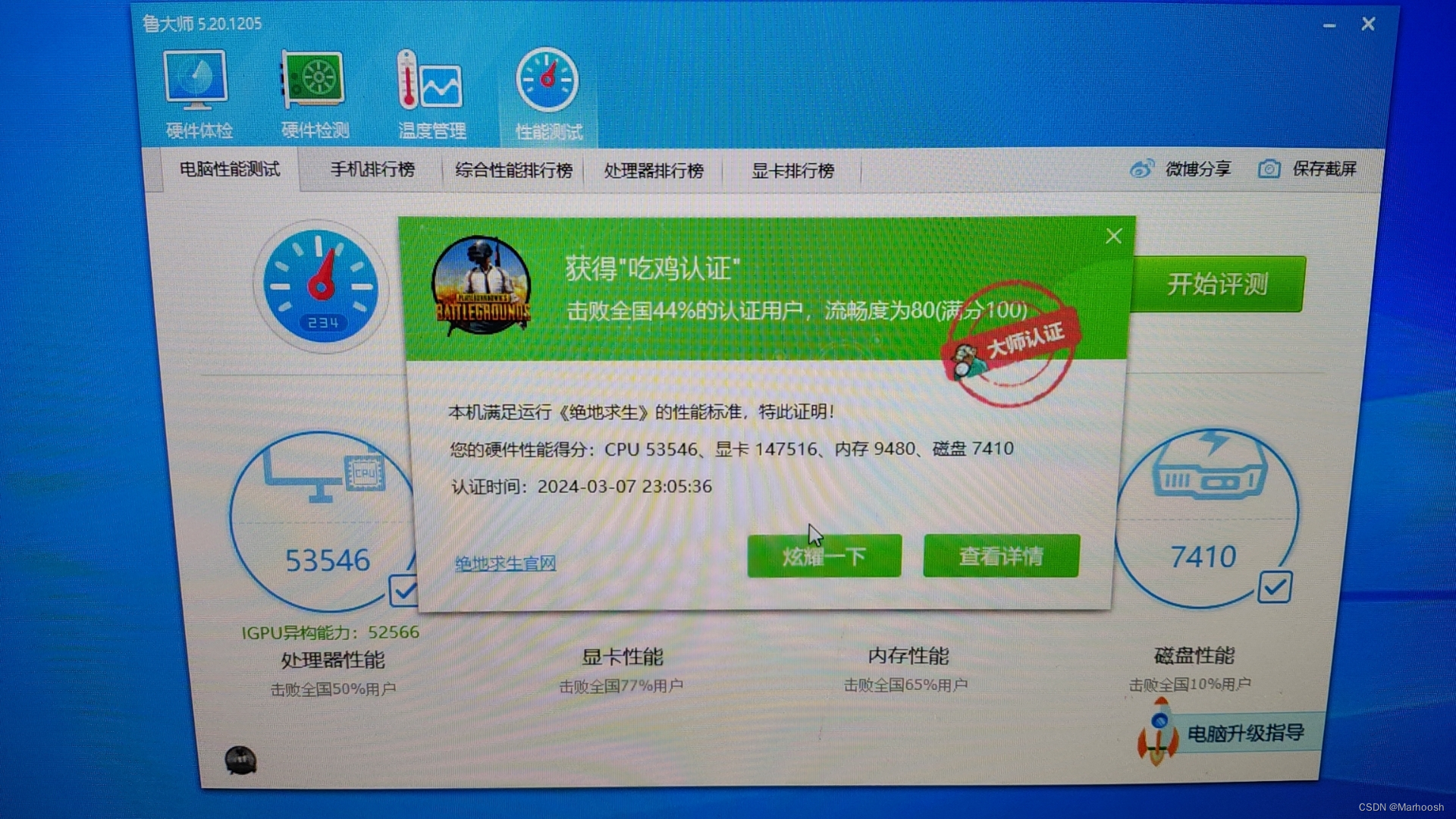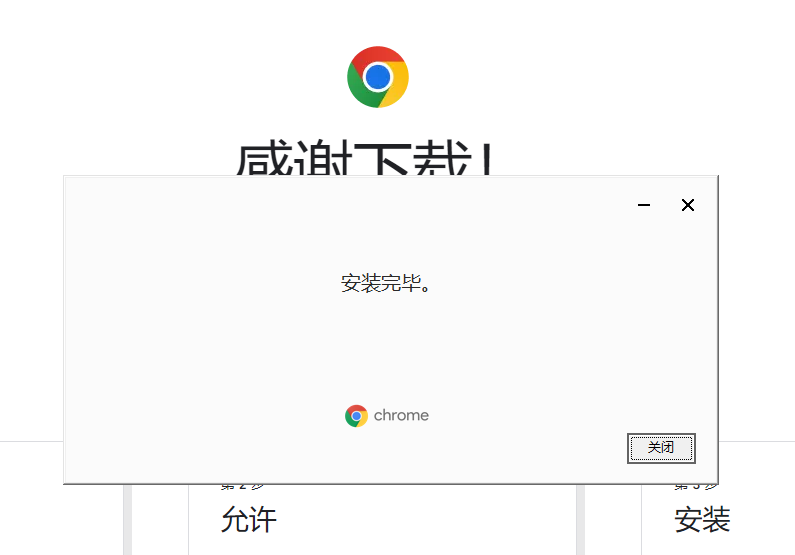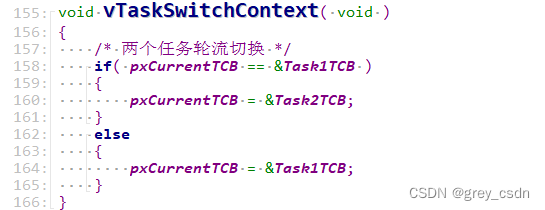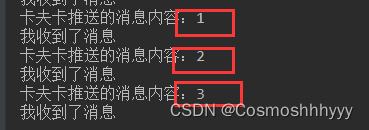[NOIP2013]车站分级
Here
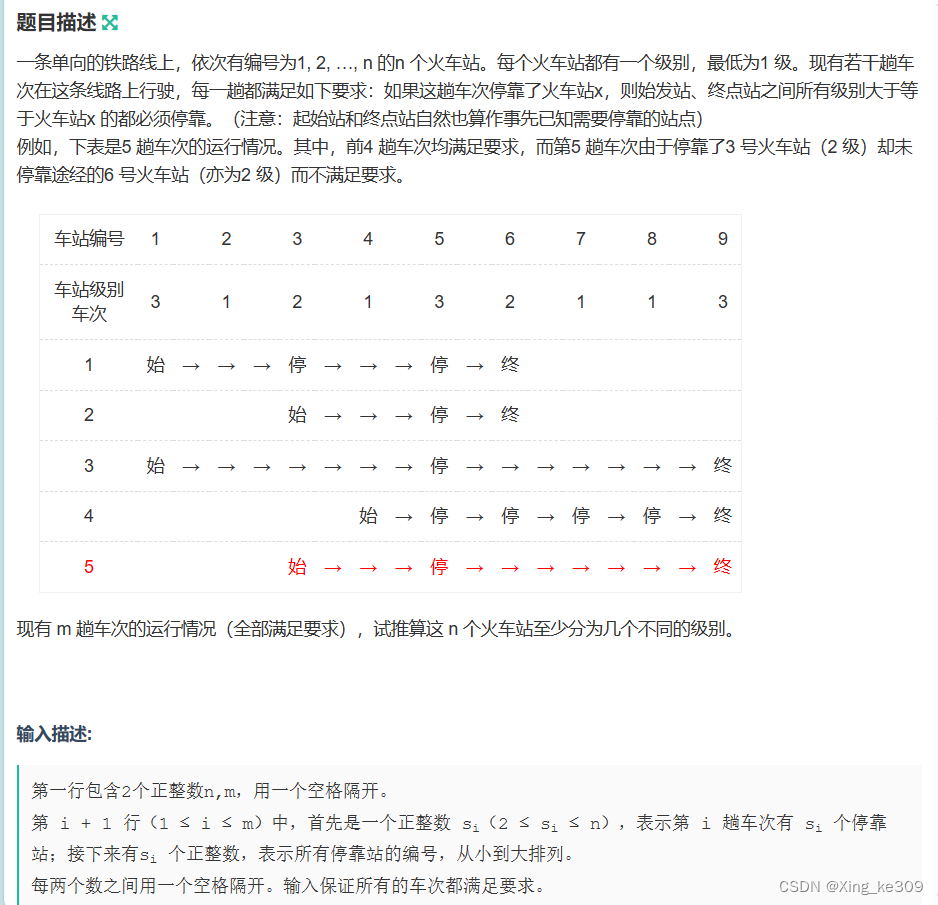 解题思路
解题思路
- 由于起始点之间所选的站号,相互之间一定满足
- 那么对于起始点间未选择的站号,一定满足
选择的站号
- 考虑用边来维护
信息,
表示
的级别大于
- 按题意,则车站会被分为几个联通块,且保证块内无环,即一定存在一个有序序列
- 则通过拓扑排序,找到连通块内的最长路径,即为最小的必要分级数
import java.io.*;
import java.math.BigInteger;
import java.util.Arrays;
import java.util.BitSet;
import java.util.HashMap;
import java.util.HashSet;
import java.util.Iterator;
import java.util.LinkedList;
import java.util.Map;
import java.util.Objects;
import java.util.PriorityQueue;
import java.util.Queue;
import java.util.Random;
import java.util.Scanner;
import java.util.Stack;
import java.util.StringTokenizer;
import java.util.Vector;
public class Main{
static long md=(long)998244353;
static long Linf=Long.MAX_VALUE/2;
static int inf=Integer.MAX_VALUE/2;
public static void main(String[] args) throws IOException{
AReader input=new AReader();
PrintWriter out = new PrintWriter(new OutputStreamWriter(System.out));
/*
* 用有向边维护大于号
* 按题意,则车站会被分为几个联通块,且保证块内无环,即一定存在一个有序序列
* 最长的序列即为最小的必要分级数
*/
int n=input.nextInt();
int m=input.nextInt();
boolean[][] e=new boolean[n+1][n+1];
boolean[] vis=new boolean[n+1];
int[] st=new int[n+1];
int[] in=new int[n+1];
for(int i=1;i<=m;++i) {
int t=input.nextInt();
Arrays.fill(vis, false);
for(int j=1;j<=t;++j) {
int x=input.nextInt();
vis[x]=true;
st[j]=x;
}
for(int j=st[1];j<=st[t];++j) {
if(vis[j])continue;
for(int k=1;k<=t;++k) {
if(e[st[k]][j])continue;
e[st[k]][j]=true;
in[j]++;
}
}
}
Queue<Integer> q=new LinkedList<Integer>();
for(int i=1;i<=n;++i)if(in[i]==0)q.add(i);
int[] a=new int[n+1];
Arrays.fill(a, 1);
while(!q.isEmpty()) {
int x=q.peek();
q.poll();
for(int i=1;i<=n;++i) {
if(e[x][i]) {
a[i]=Math.max(a[i], a[x]+1);
in[i]--;
if(in[i]==0)q.add(i);
}
}
}
int mx=0;
for(int i=1;i<=n;++i)mx=Math.max(mx, a[i]);
out.print(mx);
out.flush();
out.close();
}
//System.out.println();
//out.println();
static
class AReader{
BufferedReader bf;
StringTokenizer st;
BufferedWriter bw;
public AReader(){
bf=new BufferedReader(new InputStreamReader(System.in));
st=new StringTokenizer("");
bw=new BufferedWriter(new OutputStreamWriter(System.out));
}
public String nextLine() throws IOException{
return bf.readLine();
}
public String next() throws IOException{
while(!st.hasMoreTokens()){
st=new StringTokenizer(bf.readLine());
}
return st.nextToken();
}
public char nextChar() throws IOException{
//确定下一个token只有一个字符的时候再用
return next().charAt(0);
}
public int nextInt() throws IOException{
return Integer.parseInt(next());
}
public long nextLong() throws IOException{
return Long.parseLong(next());
}
public double nextDouble() throws IOException{
return Double.parseDouble(next());
}
public float nextFloat() throws IOException{
return Float.parseFloat(next());
}
public byte nextByte() throws IOException{
return Byte.parseByte(next());
}
public short nextShort() throws IOException{
return Short.parseShort(next());
}
public BigInteger nextBigInteger() throws IOException{
return new BigInteger(next());
}
public void println() throws IOException {
bw.newLine();
}
public void println(int[] arr) throws IOException{
for (int value : arr) {
bw.write(value + " ");
}
println();
}
public void println(int l, int r, int[] arr) throws IOException{
for (int i = l; i <= r; i ++) {
bw.write(arr[i] + " ");
}
println();
}
public void println(int a) throws IOException{
bw.write(String.valueOf(a));
bw.newLine();
}
public void print(int a) throws IOException{
bw.write(String.valueOf(a));
}
public void println(String a) throws IOException{
bw.write(a);
bw.newLine();
}
public void print(String a) throws IOException{
bw.write(a);
}
public void println(long a) throws IOException{
bw.write(String.valueOf(a));
bw.newLine();
}
public void print(long a) throws IOException{
bw.write(String.valueOf(a));
}
public void println(double a) throws IOException{
bw.write(String.valueOf(a));
bw.newLine();
}
public void print(double a) throws IOException{
bw.write(String.valueOf(a));
}
public void print(char a) throws IOException{
bw.write(String.valueOf(a));
}
public void println(char a) throws IOException{
bw.write(String.valueOf(a));
bw.newLine();
}
}
}
P4366 [Code+#4] 最短路
Here
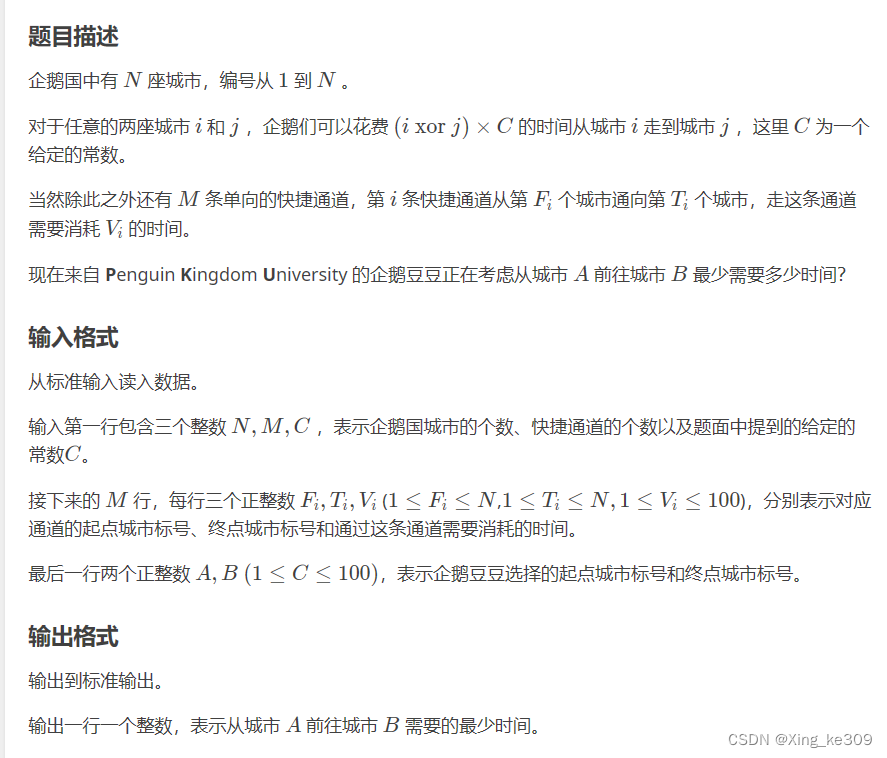
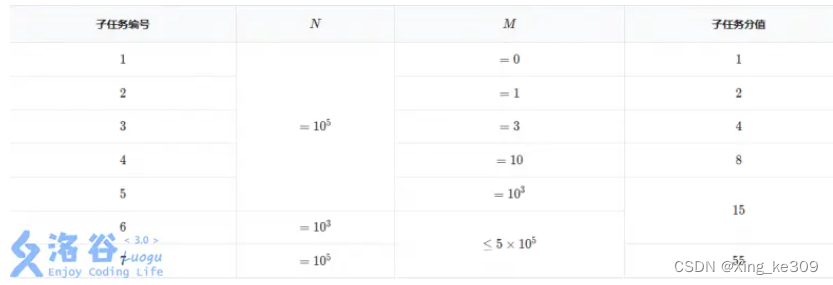
解题思路
- 主要是对于
,如何处理,避免建
条边
- 考虑二进制
,可以看作是通过某些
的边到达
- 设
,则
,建边
- 然后跑最短路即可
- 注意
,需要添一点0
- 边总共有
- 洛谷该题内存不够,可以点链接去牛客交
import java.io.*;
import java.math.BigInteger;
import java.util.Arrays;
import java.util.PriorityQueue;
import java.util.StringTokenizer;
//implements Runnable
public class Main{
static long md=(long)998244353;
static long Linf=Long.MAX_VALUE/2;
static int inf=Integer.MAX_VALUE/2;
static int N=500010+20*100010;
static int n=0;
static int m=0;
static int c=0;
static
class Edge{
int fr,to,nxt;
int val;
public Edge(int u,int v,int w) {
fr=u;
to=v;
val=w;
}
}
static Edge[] e;
static int[] head;
static int cnt=0;
static void addEdge(int fr,int to,int val) {
cnt++;
e[cnt]=new Edge(fr, to, val);
e[cnt].nxt=head[fr];
head[fr]=cnt;
}
static
class Node{
int x;
int y;
public Node(int u,int v) {
x=u;
y=v;
}
}
static int Dij(int s,int t) {
int[] dis=new int[n+1];
Arrays.fill(dis, inf);
boolean[] vis=new boolean[n+1];
dis[s]=0;
PriorityQueue<Node> q=new PriorityQueue<Node>((o1,o2)->{
return o1.y-o2.y;
});
q.add(new Node(s, 0));
while(!q.isEmpty()) {
Node now=q.peek();
q.poll();
int x=now.x;
if(vis[x])continue;
vis[x]=true;
for(int i=head[x];i>0;i=e[i].nxt) {
int v=e[i].to;
int w=e[i].val;
if(vis[v])continue;
if(dis[v]>dis[x]+w) {
dis[v]=dis[x]+w;
q.add(new Node(v, dis[v]));
}
}
}
return dis[t];
}
static void solve() throws Exception{
AReader input=new AReader();
PrintWriter out = new PrintWriter(new OutputStreamWriter(System.out));
n=input.nextInt();
m=input.nextInt();
c=input.nextInt();
e=new Edge[m+20*n+1];
head=new int[n+1];
cnt=0;
for(int i=1;i<=m;++i) {
int u=input.nextInt();
int v=input.nextInt();
int w=input.nextInt();
addEdge(u, v, w);
}
for(int i=0;i<=n;++i) {
for(int j=1;j<=n;j<<=1) {
int x=i^j;
if(x>n)continue;
addEdge(i, x, j*c);
}
}
int s=input.nextInt();
int t=input.nextInt();
out.print(Dij(s, t));
out.flush();
out.close();
}
public static void main(String[] args) throws Exception{
solve();
}
// public static final void main(String[] args) throws Exception {
// new Thread(null, new Main(), "线程名字", 1 << 27).start();
// }
// @Override
// public void run() {
// try {
// //原本main函数的内容
// solve();
//
// } catch (Exception e) {
// }
// }
static
class AReader{
BufferedReader bf;
StringTokenizer st;
BufferedWriter bw;
public AReader(){
bf=new BufferedReader(new InputStreamReader(System.in));
st=new StringTokenizer("");
bw=new BufferedWriter(new OutputStreamWriter(System.out));
}
public String nextLine() throws IOException{
return bf.readLine();
}
public String next() throws IOException{
while(!st.hasMoreTokens()){
st=new StringTokenizer(bf.readLine());
}
return st.nextToken();
}
public char nextChar() throws IOException{
//确定下一个token只有一个字符的时候再用
return next().charAt(0);
}
public int nextInt() throws IOException{
return Integer.parseInt(next());
}
public long nextLong() throws IOException{
return Long.parseLong(next());
}
public double nextDouble() throws IOException{
return Double.parseDouble(next());
}
public float nextFloat() throws IOException{
return Float.parseFloat(next());
}
public byte nextByte() throws IOException{
return Byte.parseByte(next());
}
public short nextShort() throws IOException{
return Short.parseShort(next());
}
public BigInteger nextBigInteger() throws IOException{
return new BigInteger(next());
}
public void println() throws IOException {
bw.newLine();
}
public void println(int[] arr) throws IOException{
for (int value : arr) {
bw.write(value + " ");
}
println();
}
public void println(int l, int r, int[] arr) throws IOException{
for (int i = l; i <= r; i ++) {
bw.write(arr[i] + " ");
}
println();
}
public void println(int a) throws IOException{
bw.write(String.valueOf(a));
bw.newLine();
}
public void print(int a) throws IOException{
bw.write(String.valueOf(a));
}
public void println(String a) throws IOException{
bw.write(a);
bw.newLine();
}
public void print(String a) throws IOException{
bw.write(a);
}
public void println(long a) throws IOException{
bw.write(String.valueOf(a));
bw.newLine();
}
public void print(long a) throws IOException{
bw.write(String.valueOf(a));
}
public void println(double a) throws IOException{
bw.write(String.valueOf(a));
bw.newLine();
}
public void print(double a) throws IOException{
bw.write(String.valueOf(a));
}
public void print(char a) throws IOException{
bw.write(String.valueOf(a));
}
public void println(char a) throws IOException{
bw.write(String.valueOf(a));
bw.newLine();
}
}
}

